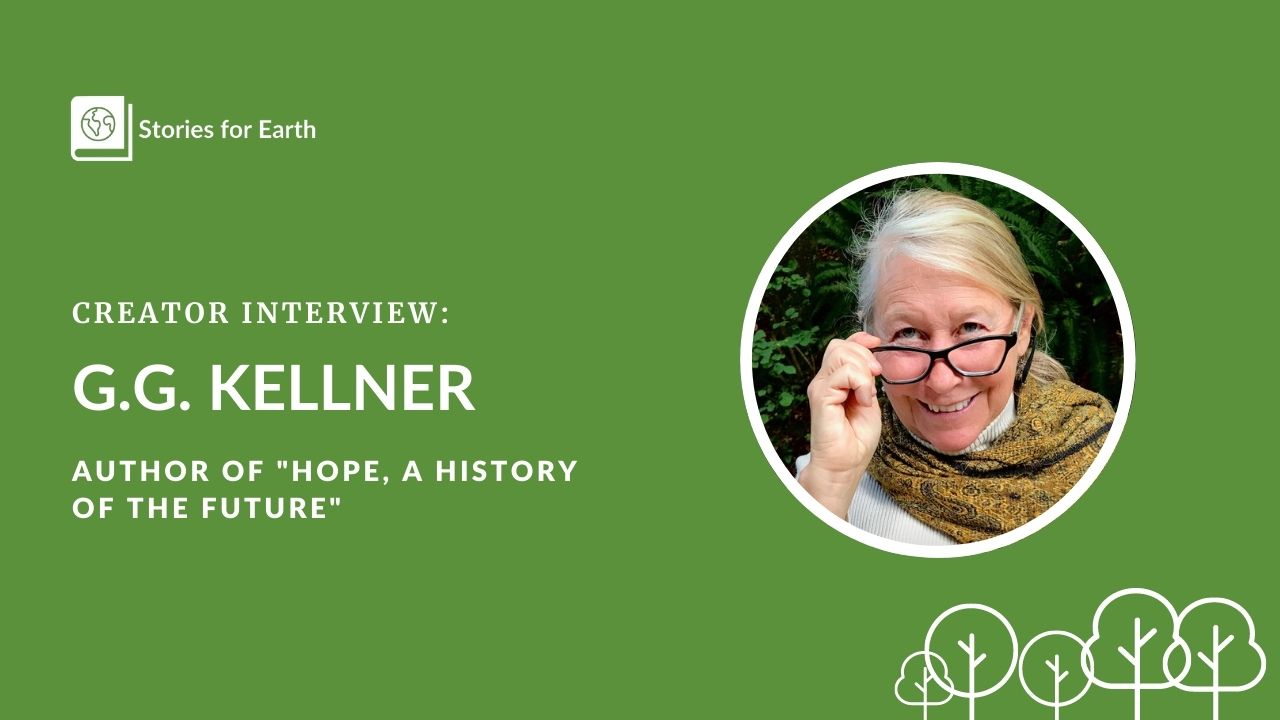Stories for Earth relies on contributions from our listeners and readers to produce high quality, in-depth content. If you buy something using the links on our website, we may earn a small commission, at no extra cost to you. For more information, see our Affiliate Disclosure.
Hope. It’s in short supply these days, particularly among those of us who are climate-aware.
Earlier this month, the IPCC released a new report warning it’s “now or never” to act on climate change if we’re to limit global warming to 2.7ºF (1.5ºC). President Biden recently announced plans to increase exports of liquefied natural gas (LNG) to make Europe less dependent on Russian fuel in addition to resuming the selling of oil and gas drilling leases on public land—two major mistakes that spell bad news for the climate and therefore all life on Earth. There’s more, of course, but you don’t need me to tell you.
And yet, some people have the audacity to talk about hope. Who are these people? Two voices I’ve been paying attention to lately are Dr. Jane Goodall and Dr. Viktor Frankl. In her latest book, The Book of Hope: A Survival Guide for Trying Times, Dr. Goodall says, “Hope…is what enables us to keep going in the face of adversity. It is what we desire to happen, but we must be prepared to work hard to make it so.”
Dr. Viktor Frankl was an Austrian neurologist, psychiatrist, and Holocaust survivor who wrote in his book Man’s Search for Meaning, “Everything can be taken from a man but one thing: the last of the human freedoms—to choose one’s attitude in any given set of circumstances, to choose one’s own way.” Dr. Frankl was also fond of quoting Nietzsche, who said, “He who has a why to live can bear almost any how.”
I struggle with hope. I guess all thoughtful people tuned in to what’s going on in the world do. Sometimes I try not to think about hope, preferring to keep my head down doing what work I can to help. Other times I do genuinely feel hopeful, like when I read about the growth of green jobs, Germany shortening its timeline to 100% renewable energy by 15 years, and the exciting vote to unionize at the Amazon facility on Staten Island.
News in the real world isn’t a reliable source of the warm-and-fuzzies, but it has its moments. And then there’s fiction.
I recently had the pleasure of interviewing author G.G. Kellner about her debut novel, Hope, A History of the Future. With this, Kellner has done the difficult work of imaging a hopeful future. It’s not a sunshine-and-rainbows kind of future—some very bad things still happen—but it is decidedly hopeful.
Living in the world we live in, I think just writing this book in the first place was an act of radical hope. We hear a lot about how screwed we are, but it’s rare to be offered a vision of what a better world might look like. This book is inspiring, and it’s a call to action to bring forth this better world. I would love to see more artists channeling their imaginations in this direction, so I’m thrilled to share my and Kellner’s conversation about her novel.
At the risk of sounding preachy—don’t give up hope. Find your “why,” and let the hard work of building a better world give you purpose. There is still so much good in the world worth fighting for.
Click to jump
“Hope, A History of the Future” by G.G. Kellner

- Buy on Bookshop from $15.59
- Buy on Amazon from $16.95
- Buy on Barnes & Noble from $16.95
- Buy on Apple Books from $9.99
About the creator

G.G. Kellner is a writer, an artist, a poet, and an educator. Her major focus over the last few years is the completion of her book Hope, A History of the Future in which she envisions a world seven generations into the future in which we have solved the some of the major social, political and environmental crisis of our time.
Her essays, letters, and poems have appeared in Utne Magazine, Orion Magazine, The Loop, The Beachcomber, and The Nature of an Island. Her most recent publications include the poem “Instructions: On Getting Ready to Die.” It can be seen on line at everywritersresource.com and her essay How to be Mistaken As an Islander was recently published in the collection, “The Heart of Vashon.”
G.G. Kellner is currently a regular guest and occasional host on the community radio program The Brown Briefly VOV 101.9 FM. Her paintings and sculptures have been shown at Lopez Library, the Blue Heron Center for the Arts, and the Barnworks. Her work in stone has been shown at the International Museum of the Horse in Lexington Kentucky. She recently facilitated a community art project as part of a local movement to move to a fossil free future. She is currently designing block prints to be incorporated into the interior design of Hope: A History of the Future.
G.G. Kellner lives on an island in the Salish Sea in a home that has been in her family for five generations. She spends most of her time writing, reading, working on artistic interests in painting and sculpture and walking the beaches and forests of her island home with her dog. She is allergic to cats.
Source: Author’s website
Follow Gayle:

